 Leading Blog | Posts by Month |
 Leading Blog | Posts by Month |
08.31.14

LeadershipNow 140: August 2014 Compilation
See more on
Posted by Michael McKinney at 02:57 PM
08.29.14

A Road Map for Young Adults
IT ALL BEGAN with an e-mail from his daughter, Avery, with the subject line: "Is this okay to send?" Avery had gotten her first post-college job as an assistant to the co-executive producer to a new network daytime TV talk show. She wanted to ask her new boss for a later start date so she would have more time to “tie up loose ends.” It was then her Dad, Ben Carpenter, realized that today’s young people don’t really know what is expected of them in the real world—the “big leagues.” They didn’t know how the working world actually worked. So Carpenter sat down to write The Bigs. It is advice for recent college graduates and young professionals, of course, but really for anyone working in the Bigs about the kinds of issues they will encounter. The book is not just a how-to book of bullet points, but it is filled with stories from Carpenter's own life that give the advice credibility and context. They are well worth reading to help you get your bearings. Not all of the advice is new, but it is the “uncommon sense” we all need to get along and influence the people around us in a positive way. Consider these thoughts: • It is ironic this issue tripped me up so badly because I believe my normally rigorous adherence to my Golden Rule was a major reason, from early on, I was viewed as a leader at Greenwich Capital. The lesson is … always follow the Golden Rule and never say anything negative about anybody in your company. To do otherwise is unprofessional, unnecessary, and, more often than not, will come back to haunt you. • Take responsibility for all mistakes you make, and if you are a competent and valued employee, when you do take responsibility, it will be viewed as a sign of strength, not weakness, by your co-workers. • Understand that how your boss views you will be largely a function of how your peers and subordinates see you. • Whatever qualities you look for in a spouse, please include “a happy person” at or near the top of your list. • While you are looking towards the future and the goals you hope to accomplish, you need to appreciate the blessings you have today. Just like choosing to be happy, you can choose to appreciate what you have. If I could give one gift to those I love the most, it would be for them to always appreciate what they have. • Leave your baggage at home. The insecurities and resentments from your childhood will just slow you down or, in some cases, sabotage your plans entirely. You are now a full-grown man or woman, and it is time to sand up, take responsibility, and start building the life you want to live. You may not yet have had a shock dramatic enough to make you drop your childhood baggage. However, you need to appreciate how stunningly different the real world is from your previous life as a student and seize this moment to make a fresh start. • Choosing a career you can do well, rather than doing what you want, might sound unappealing, but it isn’t. The reason is the satisfaction you get from being good at your job. From my personal experiences, as well as observing family, friends, and co-workers, I know most professionals are most happy doing what they are good at. • The most important advice I can give you about how to get a great job is to arrange for informational interviews with junior staff at a company before you have a job interview. • In any good-sized company or department, there should be no need to reinvent the wheel. Imitate the actions of the star employees and then use your creativity and talents to perform even better.

Posted by Michael McKinney at 05:39 PM
08.21.14

Get Advice from People Who Have…Giving decisions to people closest to the action can transform any organization says Dennis Bakke in The Decision Maker. In a decision-maker organization, the leader leads by choosing a decision-maker based on their proximity, perspective, experience and wisdom.But since we are all human, the decision-maker must ask for advice. The advice process brings multiple perspectives together to guide a successful outcome. But the decision-maker makes the final call—and takes responsibility for it. Deciding who to get advice from can influence a successful outcome. So get advice from people who have: Experience: Has this person had experience with this problem? There’s no teacher like experience. Position: People in different positions see different things. The decision-maker asks a leader, a peer, someone below them in the hierarchy—and even, if circumstances warrant, experts from outside the company. Responsibility: Decisions have consequences—and decision-makers should be held accountable for theirs. At the same time, nobody is right all the time. The most important part of any decision is that the decision-maker fully engages with the advice process, not just that he or she gets it “right.” Ownership: When people are asked for advice, they start to feel ownership. Ideally, everyone who offers advice works for the success of the project as if it were their own. The advice process isn’t just about getting the right answer. It’s about building a strong team and creating a process of communication that will improve all decisions in a company. 
Posted by Michael McKinney at 08:44 PM
08.18.14

Leading People Like Family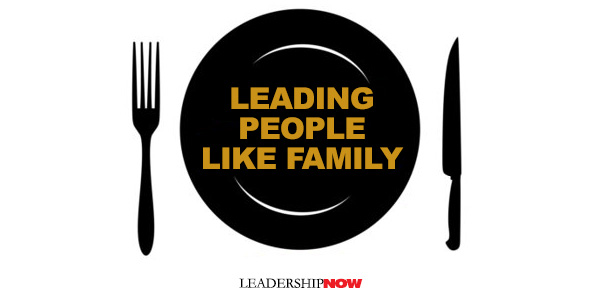 IN Leaders Eat Last, Simon Sinek shares an insight he learned from Bob Chapman, Chairman and CEO of the Barry-Wehmiller Companies. It’s an important way of framing our leadership responsibility:
IN Leaders Eat Last, Simon Sinek shares an insight he learned from Bob Chapman, Chairman and CEO of the Barry-Wehmiller Companies. It’s an important way of framing our leadership responsibility:
Every single employee is someone’s son or someone’s daughter. Parents work to offer their children a good life and a good education and to teach them the lessons that will help them grow up to be happy, confident and able to use all the talents they were blessed with. Those parents then hand their children over to a company with the hope the leaders of that company will exercise the same love and care as they have. “It is we, the companies, who are now responsible for these precious lives,” says Chapman. Sinek explains: “Being a leader is like being a parent, and the company is like a new family to join. One that will care for us like we are their own … in sickness and in health. And if we are successful, our people will take on our company’s name as a sign of the family to which they are loyal.” He adds, “It is about committing to the well-being of those in our care and having a willingness to make sacrifices to see their interests advanced so that they may carry our banner long after we are gone.”
Intimidation, humiliation, isolation, feeling dumb, feeling useless and rejection are all stresses we try to avoid inside the organization. But the danger is controllable and it should be the goal of leadership to set a culture free of danger from each other. And the way to do that is by giving people a sense of belonging. By offering them a strong culture based on a clear set of human values and beliefs. By giving them the power to make decisions. By offering them trust and empathy. By creating a Circle of Safety. Too often, people are trying to protect themselves from leaders that are willing to sacrifice anyone to advance their own careers. “Without a Circle of Safety, people are forced to spend too much time and energy protecting themselves from each other.” We thrive when we feel safe in our group. Leaders can be found at any level in an organization. They are the ones who are willing to give of themselves for the sake of others.

Posted by Michael McKinney at 10:03 PM
08.14.14

5 Leadership Lessons: Opportunity and Risk are Soul Mates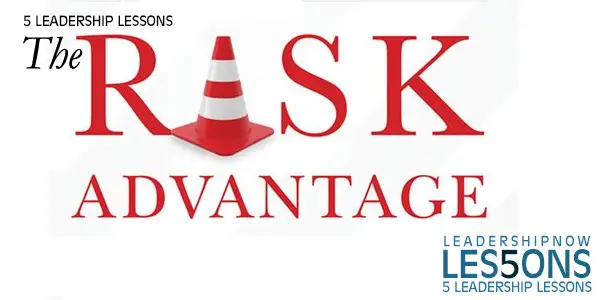
The Risk Advantage by Tom Panaggio is designed as a guide for those who are contemplating an entrepreneurial pursuit, are already engaged in building a business, or are currently working for someone else and want to inject their entrepreneurial ideas and attitude. “Those who understand where risk belongs in their lives,” says Panaggio, “will ultimately be successful.”
The reality is that important decisions made by intelligent people having the best information and intentions could still result in an undesirable outcome. Leaders make decisions to determine the company’s direction. Promoting the proactive nature of decision-making is the objective because in an environment where there is decision paralysis, forward motion ceases, and that is a bad outcome.

Posted by Michael McKinney at 08:52 PM
08.12.14

Designing Moments of Impact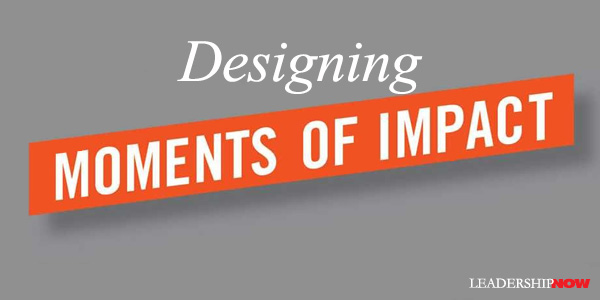 IN A WORLD of adaptive challenges—messy, open-ended, and ill-defined—your garden variety meeting isn’t going to cut it. What you need is a strategic conversation. But these kinds of conversations don’t just happen—they need to be designed.
IN A WORLD of adaptive challenges—messy, open-ended, and ill-defined—your garden variety meeting isn’t going to cut it. What you need is a strategic conversation. But these kinds of conversations don’t just happen—they need to be designed.
Moments of Impact by Chris Ertel and Lisa Kay Solomon will help you to do just that. A moment of impact is created at the intersection of design, strategy and conversation. Pierre Wack described the challenge as: It happens when your message reaches the microcosms [mental models] of decision makers, obliges them to question their assumptions about how their business world works, and leads them to change and reorganize their inner models of reality. Mental models matter. The real challenge is “not to find the right answer to an adaptive challenge but rather to help shape people’s perceptions of the problem—and thus of potential solutions.” 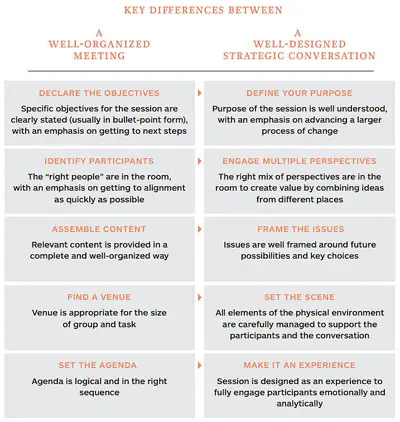 Here are the five core principles for designing strategic conversations:
Moments of Impact is really two books in one. Included is a comprehensive 60-page Starter Kit. It’s a collection of tools and tips that will help you start designing strategic conversations. Well worth the price of the book alone. 
Posted by Michael McKinney at 10:58 PM
08.06.14

How to Accelerate Learning and Change Lives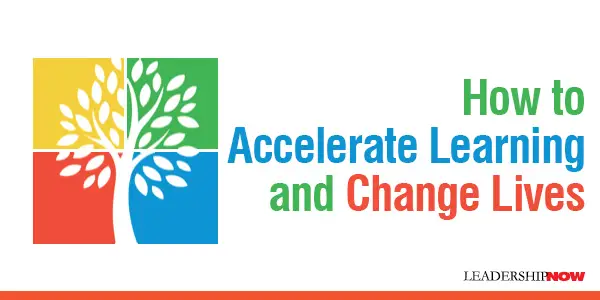
TEACHERS are the builders of the future. In a book written for teachers, we find a valuable book for all leaders because leaders are teachers. Leaders are educators. In The Best Teacher in You, you will find the thinking and approaches behind highly effective teachers who accelerate learning and change lives. There are two kinds of change that individuals experience: incremental change and deep change. “We frequently make incremental changes: We make adjustments, we elaborate on a practice, we try harder, and we exert a greater degree of control. In other words, we attempt to solve the problem using the assumptions we currently hold. Deep change is more demanding because it requires the surrender of control….It involves embracing purpose and then moving forward by trial and error while attending to real-time feedback.” It is deep change that we seek to bring about as teachers and leaders. There are two views to making this happen: directive and co-creative. A directive perspective suggests the teacher directs and controls the classroom. “Teaching is a process in which a more expert person imparts knowledge or skill to a less expert person.” A directive perspective is a place to begin but when we build on it, we grow into a co-creative perspective and we move beyond direction, control, discipline, and repetition. “As the teacher and the students commit to a common purpose and form high-quality relationships, they become a system that has emergent possibilities. In a co-creative, collaborative environment, students hold each other accountable, leadership is shared, and new perspectives emerge. The teacher/leader becomes a facilitator. In a practical way, the authors—Robert Quinn, Katherine Heynoski, Mike Thomas, and Gretchen Spreitzer—have developed a framework consisting of four themes at the center of highly effective teachers' practice. It incorporates both the directive and co-creative perspectives. Each area of effectiveness is associated with particular skills and preferences and all the quadrants have value. After we identify in which of these areas we can find our individual strengths, we can then accelerate our development when we begin to stretch from a position of strength toward an area of growth. If we are very “red” for example, our effectiveness might improve if we became more “yellow” or “green.” A very helpful concept.
Here are a few ideas presented in the book from highly effective teachers: Developing the desire to learn: “This process does not begin with her acting on the students. It begins with her acting upon herself. She does the internal work necessary to display her own enjoyment of learning…. [Finally the teacher] is no longer the center of attention, and neither are the students. At the center of attention is the process of learning. The class transforms from a hierarchy to an adaptive learning organization.” Structure: “Structure is not his purpose. Structure serves his purpose.” “Structure and control are paths to freedom and learning.” “Structure and routine are there so students can work outside the box.” “I think the more structured and organized I am, the more creative we can be. Without structure it doesn’t work. We need organized chaos. We need some way to manage the mess. Structure and order free me.” Enhancing relationships: Sarah’s “most immediate concern is how to negotiate the rift between the content she must teach and the real-life experiences of her students.” Students are often “passive observers of their education because the directive perspective is taken too far. She feels that overly directive teaching can minimize the emotional content of the curriculum. Rather than tell her students what is right or wrong, she wants them to engage and ‘negotiate’ difficult social issues so that they come to their own deep understanding of what is right and wrong.”

Posted by Michael McKinney at 09:08 AM
08.05.14

Leading Views: It's 11:30 In Be the Best at What Matters Most, author Joe Calloway relates a story about the importance of the need to get going: In Be the Best at What Matters Most, author Joe Calloway relates a story about the importance of the need to get going:
Sunday afternoon, my 10-year-old daughter, Jessica, asked me if she and her best friend, Emma, could set up a lemonade stand in our yard. It was a very drizzly, wet, cool day. But I thought a lesson could be learned about disappointment and realistic expectations, so I said "Sure." They painted a sign ("50 Cents a Cup - All Proceeds to Benefit Animal Shelter"), made the lemonade, set up their table in the yard, and stood in the drizzle. I sighed the sigh that a wise parent sighs as his child is about to face disappointment. Finally, a lone, soggy jogger stopped. Then a car. Then neighbors started coming over. THEN the Grey Line Tour bus comes to a screeching halt right in front of our house. (I'm in Nashville. A music star lives in my neighborhood. Not unusual.) The tour bus driver opened his door, ordered a cup of lemonade, then invited the girls to bring their pitcher onto the bus and almost every passenger bought a cup. After two hours, the girls had made almost $60 for the animal shelter. A valuable lesson was learned. Not by them. By me. The lesson was that sometimes, even when everything seems stacked against you, you just go. It's just your time. Because you make it your time. As Andy Sambury of Saturday Night Live once said, "We don't start the show because we're ready. We start the show because it's 11:30." For Jessica and Emma, it was 11:30. Look at your watch. What time is it?
Posted by Michael McKinney at 12:01 PM
08.04.14

Warren Bennis 1925-2014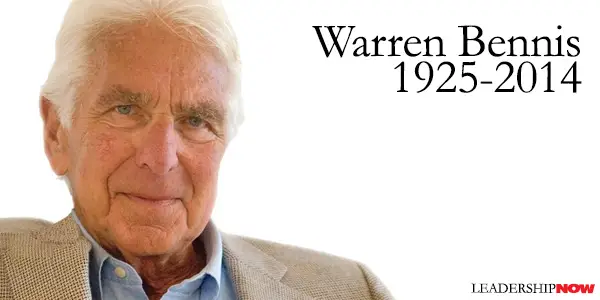
THE father of leadership, Warren Bennis died Thursday, July 31 at the age of 89. He had served as a business professor at the University of Southern California for the last 35 years. He wrote nearly 30 books including An Invented Life, which earned him a Pulitzer Prize nomination. His leadership thinking was in many ways ahead of its time. I first met Warren Bennis through his book, The Unconscious Conspiracy: Why Leaders Can’t Lead, in 1976. Later it was revised and reprinted as Why Leaders Can't Lead: The Unconscious Conspiracy Continues. He sparked my interest then and there in the discipline of leadership. In that first book he explained that the real enemy to leadership is apathy. Our organizations, he wrote, are “afflicted with a threefold sense of loss: loss of community, loss of purpose, and loss of power.” The core of the problem is that our leaders weren’t and still aren’t leading. “They’re consulting, pleading, temporizing, martyrizing, trotting, putting out fires, either avoiding or taking the heat, and spending too much energy in doing both.” Although he said that leaders must also manage, they are spending too much time managing. 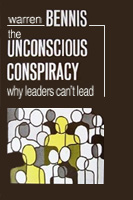 Bennis was always willing to—even interested in—taking the time to help you shape your thinking. His insights have shaped my own in many ways. More from Warren Bennis: “Too many companies believe people are interchangeable. Truly gifted people never are. They have unique talents. Such people cannot be forced into roles they are not suited for, nor should they be. Effective leaders allow great people to do the work they were born to do.” Taking charge of your own learning is a part of taking charge of your life, which is the sine qua non in becoming an integrated person.” “The most dangerous leadership myth is that leaders are born — that there is a genetic factor to leadership. This myth asserts that people simply either have certain charismatic qualities or not. That's nonsense; in fact, the opposite is true. Leaders are made rather than born.” “When the trust and credibility of leaders are at their lowest, when the beleaguered survivors in leadership positions feel unable to summon up the vestiges of power left to them, we most need people who can lead.” Bennis was a remarkable man with well-developed insights
Posted by Michael McKinney at 07:36 PM
08.01.14

First Look: Leadership Books for August 2014Here's a look at some of the best leadership books to be released in August.




For bulk orders call 1-800-423-8273  Build your leadership library with these specials on over 118 titles. All titles are at least 40% off the list price and are available only in limited quantities.
Posted by Michael McKinney at 07:33 AM
|
BUILD YOUR KNOWLEDGE


How to Do Your Start-Up Right STRAIGHT TALK FOR START-UPS 
Grow Your Leadership Skills NEW AND UPCOMING LEADERSHIP BOOKS 
Leadership Minute BITE-SIZE CONCEPTS YOU CAN CHEW ON 
Classic Leadership Books BOOKS TO READ BEFORE YOU LEAD |
|